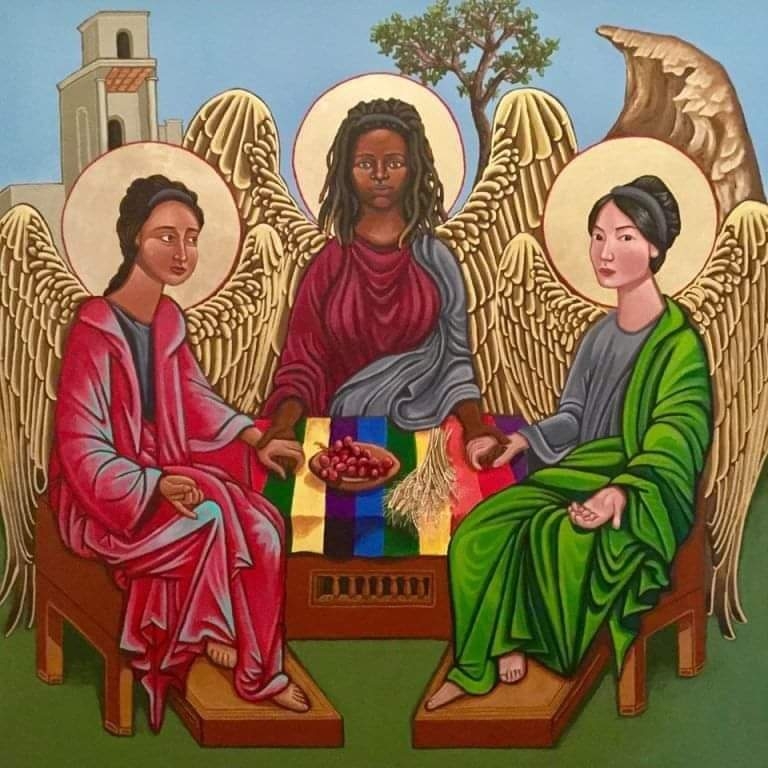 St Alban’s Episcopal Church Bolivar, Missouri Friday-Saturday, June 10-11, 2022 Another Thought about the Trinity The Trinity Richard Rohr, Franciscan theologian and spiritual writer talks about the Trinity as “God for us, God alongside us, God within us.” Two Icons Andrei Rublev’s famous oneRublev was a 15th century Russian painter.This icon was painted about 1425 – depicting the three angels who appeared at the Oak of Mamre in Genesis 18:1-8. It is intended to represent the Trinity.  Rublev’s icon was original for its time, drawing on the story of the three angels who visit Abraham and Sarah. He shows the three angels sitting at table together, each one representing a person of the Trinity. He used the metaphors he had: Father, Son and Holy Spirit. Above the Father (to the left) see the house: “In my Fathers house there are many rooms” – and the house as a symbol of Abraham’s hospitality. Above the Son, in the center of the icon, is the tree – the tree of life, of which we are branches; and the tree of the cross. Above the Spirit is a rock – where Moses split it and water poured out – the water of the Spirit, also the deserted place where people often meet God. On the table is the chalice – the wine – the cup of the Eucharist, of thanksgiving. We can only talk about God through metaphor. Speaking – and language itself is simply metaphor. The real thing more than we can ask or imagine – or expect to draw or paint or grasp. Here we have the Father, the Son and the Holy Spirit shown as female or sexless angels. Kelly Latimore’s interpretation of Rublev’s icon This startling icon was commissioned by The Rev Dr. Mark Bozzuti-Jones, a Jamaican-born priest at Trinity Episcopal Church, Wall Street, New York. They wanted to show a different set of metaphors for God, but based on Rublev’s icon.They wanted to see the angels as women which allowed them to explore the idea of God as mother, sister, feminine. And the women are different – not flattened into some “ideal” view of the feminine. The angels are still sitting at table, but this time, holding hands. The rainbow tablecloth expresses the welcome to all. And the Holy Spirit is dressed in green, as is Rublev’s – symbolizing new life, inviting us to the table. And instead of the chalice, we see wheat and grapes – the Eucharist to be – symbolizing its reality, but also the work that still must be done – to grind the wheat and bake the bread and to crush the grapes to make the wine. We have something to do within our lives and within the world. The background is almost exactly the same as in Rublev’s icon – the House, the Tree and the Rock – or the mountain.If you were drawing the Trinity – how would you depict that which is beyond description? What metaphors would you use?   |

Categories:
Tags:
No responses yet